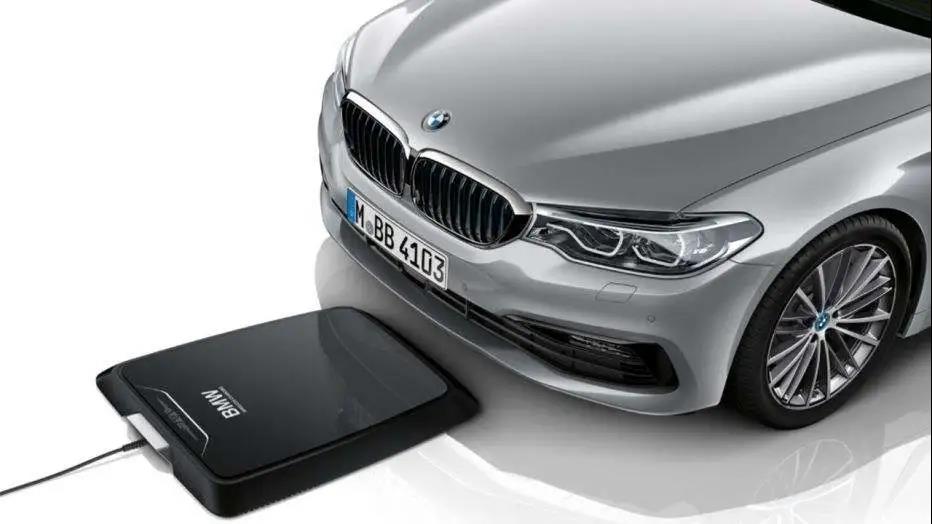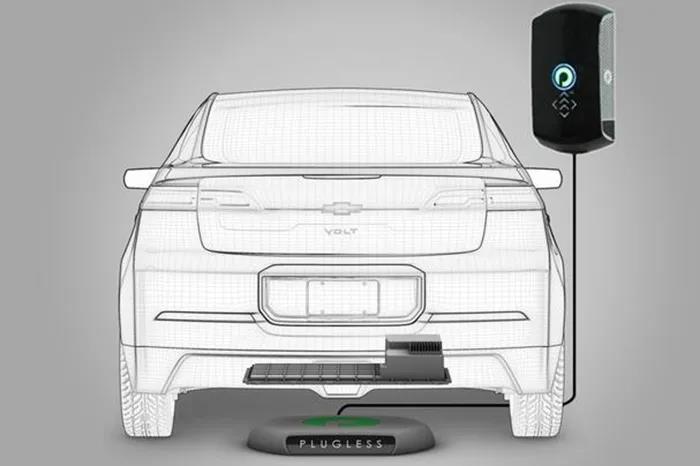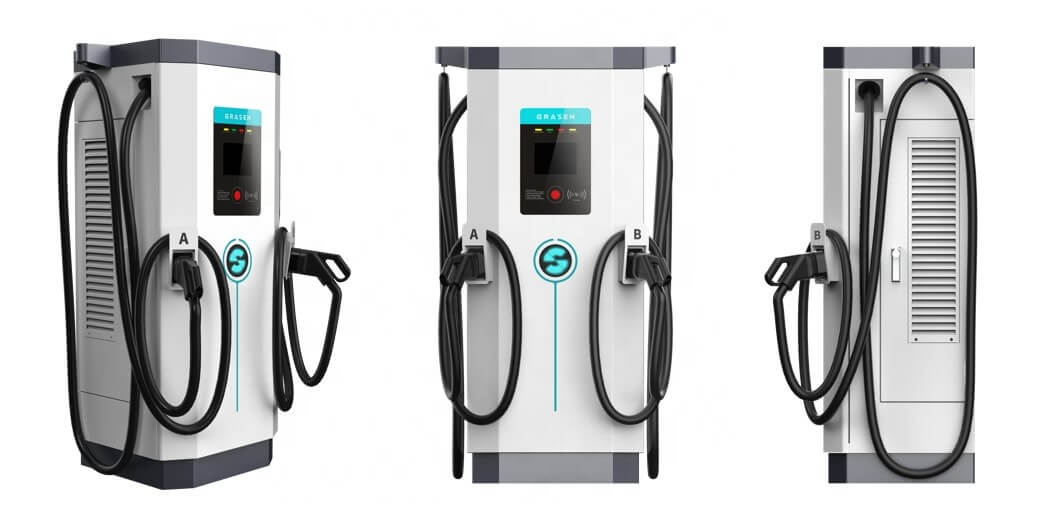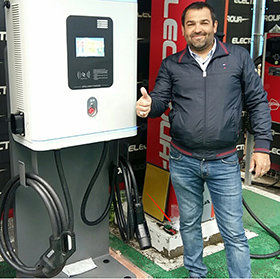What is DC Fast Charger?
"DC" refers to "direct current," the type of power that batteries use. EVs have "onboard chargers" inside the car that convert AC power to DC for the battery. DC fast chargers convert AC power to DC within the charging station and deliver DC power directly to the battery, which is why they charge faster.
In the majority opinion, the current charging efficiency and speed still restrict the popularization and development of pure electric vehicles. As a result, a variety of ways to improve the convenience of charging were born, such as super-fast charging, battery replacement, and wireless charging. Among them, wireless charging technology has long been widely used and recognized in mobile phones, intelligent equipment and other fields, and has almost become a standard feature of smart phones. However, in the field of pure electric vehicles, wireless charging is still not a mainstream charging method.
Wireless Charging Technology
At present, there are two mainstream wireless charging technologies for electric vehicles, electromagnetic induction and magnetic resonance, and both of them have their own advantages and disadvantages. Take the electromagnetic induction type wireless charging system for example, it consists of two coils, one is the transmitting coil, through the generation of oscillating magnetic field to make the other receiving coil generate alternating current under Faraday's electromagnetic induction law, so as to achieve the purpose of charging. Now the popular wireless charging function of mobile phones is electromagnetic induction, which has the advantage of high energy conversion rate.
But there are also disadvantages. Since the charging efficiency has a direct relationship with the distance between the transmitter coil and the receiver coil, position deviation, etc., once the positions of the two coils are slightly deviated, will seriously affect the efficiency of wireless charging, so the scene is not widely used, and can only achieve one-to-one charging, adopt the solution set of car companies such as BMW, Mercedes-Benzes, Volvo luxury brands.

Generally speaking, magnetic induction wireless charging requires a "charging pad" (transmitting coil) fixed on the ground, and the receiving coil is installed at the bottom of a movable vehicle. Wireless charging can only be achieved when the vehicle is accurately reversed into a designated position. Obviously, magnetic induction wireless charging places more precise requirements on location. Which is why, many car companies closely integrate wireless charging technology with parking systems.
The other is magnetic resonance, the principle of which is to make the transmitting coil and the receiving coil have the same resonance frequency, and the energy conversion is carried out through frequency resonance. This way not only has low requirements on the position of the coil, but also can be used for one-to-many charging, but the disadvantage is that the energy transmission loss is high.
Thanks to the one-to-many technical principle, the magnetic resonance technology provides conditions for the design of dynamic wireless charging, that is, through the wireless charging system laid under the road, the vehicle can be charged while driving. Previously, South Korea had laid a 12-kilometer-long section of wireless charging, allowing vehicles to be charged while driving on the road.
At the same time, the dynamic wireless charging demonstration project developed by Qualcomm has also been launched. For this purpose, a 100-meter experimental track was built in France and a 20kW wireless charging system was paved. Although the charging power of 20kW is not high, and the laying of excessively long lines is cost-effective. The ratio is not good, but this is also the basis for realizing wireless charging.

The Efficiency of Wireless Charging Is Not High
In general, the wireless charging system can indeed greatly improve the convenience of charging. It can be stopped and charged immediately, and the wireless charging equipment has lower space requirements. If it is magnetic resonance wireless charging, it is theoretically possible to charge while walking, just like playing with a mobile phone while charging. It is even expected to solve mileage anxiety.
However, it should be noted that no matter which wireless charging technology is used at present; the charging power is very small. The output power of the mainstream wireless charging system is no more than 10kW, which is almost the same as that of the slow ordinary AC charging station. Moreover, the energy conversion efficiency is lower than that of the wired method, which is naturally not conducive to fast charging.
Wireless Charging Is Expensive To Build
The construction cost of wireless charging equipment is quite high, and it is not on the same level as ordinary charging stations. First of all, it is necessary to dig a hole in the ground to bury the necessary components such as charging coils and dark wires, plus expensive wireless charging equipment. Remember, the cost of a set of wireless charging equipment is 5-6 times that of an ordinary three-dimensional slow charging station. If something goes wrong with the buried transmitter in the future, maintenance costs will also have to be considered. At this stage, charging stations only need to be installed on the ground by adding lines, which is more advantageous in terms of operability and construction cost.
In addition, wireless charging equipment has poor adaptability to the environment. Due to the uncontrollability of the external environment, when wireless charging is used in public places, some foreign objects appear in the electromagnetic field, which will affect charging. There should be no obstacles between the transmitting coil and the receiving coil during the charging process, otherwise the charging will stop. Therefore, the most ideal installation location of the wireless charging device is in a relatively closed space, such as an indoor parking lot.
At this stage, wireless charging can only be regarded as a niche existence, which is more suitable for some high-end plug-in hybrid vehicles. With the rapid advancement of battery technology, one day pure electric vehicles can not only achieve thousands of kilometers of battery life, but also greatly shorten the charging time through super-fast charging technology. Unless wireless charging technology can break through to improve charging efficiency and speed, wireless charging technology will be hard to be recognized by the market.
DC Fast Charger Supplier
Luoyang Grasen Power Technology Co., Ltd have developed a series of electric vehicle on-board charger series, DC/DC converter series, DC charging power module series, AC charger series, DC charger series, etc. Many products have leading technology in China, widely applied in the fields of new energy electric vehicles all over the world.

If you want to know more details about our company and EV chargers, please feel free to contact us via email sales@grasen.com to make a great progress of your business.

-- Marcus Groll,A Charging Station Owner in UKRAINE
Start your EV charging station businesses with Grasen. For a no-obligation quote, hit the button below, fill in your details, and we’ll get back to you.
